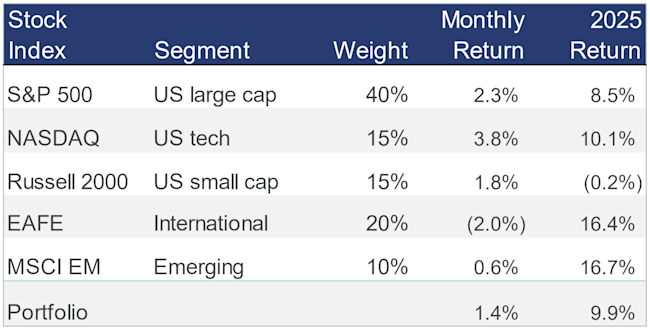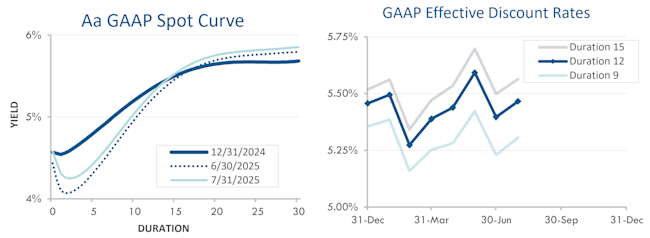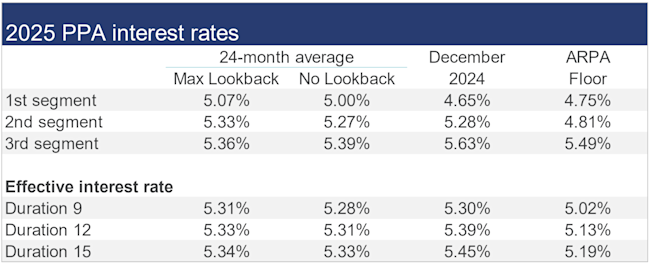Pension Finance Update July 2025
Pensions gained modest ground again in July due to higher stock markets and higher interest rates.
Pensions gained modest ground again in July due to higher stock markets and higher interest rates. Both model plans we track[1] gained ground last month: traditional Plan A gained 1%, ending the month up almost 4% for the year, while the more conservative Plan B gained a fraction of 1% last month, ending the month up less than 1% through the first seven months of 2025:

Assets
Most stock indexes gained ground again last month. A diversified stock portfolio gained more than 1% last month, ending July up almost 10% for the year:

Interest rates rose 0.1% during July. As a result, bonds lost a fraction of 1% last month. For the year, bonds remain up 2%-4%, with long duration corporate bonds lagging.
Overall, our traditional 60/40 portfolio gained less than 1% last month and is now up 7% so far this year, while the conservative 20/80 portfolio was flat last month and remains up 4% through the first seven months of 2025.
Liabilities
Pension liabilities (for funding, accounting, and de-risking purposes) are driven by market interest rates. The first graph below compares our Aa GAAP spot yield curve at December 31, 2024 and July 31, 2025 (along with the movement in the curve last month). The second graph below shows our estimate of movements in effective GAAP discount rates for pension obligations of various duration during 2025:

Corporate bond yields rose almost 0.1% during July. As a result, pension liabilities declined a fraction of 1% last month, ending July up 3% for the year so far.
Summary
Since the end of March, stocks have produced double-digit returns; at this point, 2025 is shaping up to be yet another year of good news for pension finances. The graphs below show the movement of assets and liabilities for our two model plans so far this year:

Looking Ahead
Sustained higher interest rates since late 2022 have substantially diminished the impact of pension funding relief since 2023. Underfunded plans are likely seeing higher required contributions for the next few years.
Long-term rates moved 0.1% higher last month. We expect most pension sponsors will use effective discount rates in the 5.3%-5.7% range to measure pension liabilities right now.
The table below summarizes rates that calendar-year plan sponsors are required to use for IRS funding purposes for 2025, along with estimates for 2026, including the rate “floor” that applies to the 24-month average rates under funding relief for each segment.


[1]Plan A is a traditional plan (duration 12 at 5.5%) with a 60/40 asset allocation, while Plan B is a largely retired plan (duration 9 at 5.5%) with a 20/80 allocation with a greater emphasis on corporate and long-duration bonds. We assume overhead expenses of 1% of plan assets per year, and we assume the plans are 100% funded at the beginning of the year and ignore benefit accruals, contributions, and benefit payments in order to isolate the financial performance of plan assets versus liabilities.
